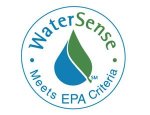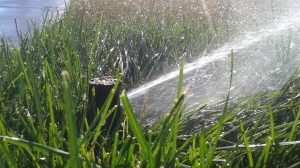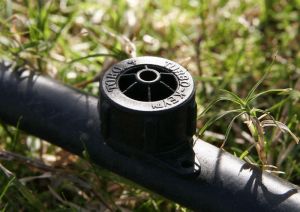 When the temperature soars up into the 90s, there are many different ways to beat the heat using water. We might shower more often, turn on the sprinklers for the thirsty lawn, or chug ice water, to name a few. However, the increase in water usage during summertime can translate into more water wasted and higher bills. This puts a damper not only on summer fun but on the long-term health of our communities across the state. Thus, it is vital that we increase our water efficiency and conserve as much as possible today, in order to diminish the chances of future shortages. (Don’t stop drinking water though. Stay hydrated!) The new and updated Citizen’s Guide to Colorado Water Conservation provides balanced and accurate information on water conservation at home, in agriculture, and in industry. If you haven’t gotten your hands on a copy yet, order it here.
When the temperature soars up into the 90s, there are many different ways to beat the heat using water. We might shower more often, turn on the sprinklers for the thirsty lawn, or chug ice water, to name a few. However, the increase in water usage during summertime can translate into more water wasted and higher bills. This puts a damper not only on summer fun but on the long-term health of our communities across the state. Thus, it is vital that we increase our water efficiency and conserve as much as possible today, in order to diminish the chances of future shortages. (Don’t stop drinking water though. Stay hydrated!) The new and updated Citizen’s Guide to Colorado Water Conservation provides balanced and accurate information on water conservation at home, in agriculture, and in industry. If you haven’t gotten your hands on a copy yet, order it here.
This blog post will review some of the key points from the Efficient Water Use in Homes and Cities portion of the guide. I won’t give too many spoilers though! For the bigger picture, you can check out the guide itself.
Overall, there are many ways to passively and actively conserve water in Colorado homes and landscapes. Passive conservation involves lawmakers, water providers, and others putting larger systems in place, like law-mandated building retrofits that require water-efficient fixtures. These behind-the-scenes water conservation measures result in significant up-front savings of water and money. According to the Conservation Guide, “a 2015 study by Aquacraft estimates that over 40 percent of the water supply gap that municipal and industrial water uses face could be met with the passive replacement of interior retrofits and strict building codes that require use of the most efficient fixtures.” Imagine if that much water could be saved without having to even think about it after construction or retrofits are complete!
Active conservation is more hands-on and requires your participation. It involves activities like getting a water audit for your home and intentionally using less water indoors and outdoors. Some things you can do this summer are:
- Replace old fixtures including toilets, faucets aerators, and shower heads with WaterSense labeled models. Yes, you can do this without sacrificing your water pressure!
- Check toilets, faucets, and showers for leaks and repair them right away.
- Run only full loads of laundry and dishes.

 One of the most significant ways to reduce your home’s water footprint is to increase the efficiency of your outdoor irrigation systems. Urban lawn watering and irrigation is the single largest demand on most of Colorado’s municipal water supplies, according to the Conservation Guide. “Outdoor water use accounted for 62 percent of single-family residential use in Denver and 50 percent in Fort Collins, according to a 2016 national study.” Think about it: watering your lawn could be eating up half of the money you put toward your water bill. There are plenty of ways to reduce the water and money you pour into your turf, without sacrificing the beauty of your yard. You can:
One of the most significant ways to reduce your home’s water footprint is to increase the efficiency of your outdoor irrigation systems. Urban lawn watering and irrigation is the single largest demand on most of Colorado’s municipal water supplies, according to the Conservation Guide. “Outdoor water use accounted for 62 percent of single-family residential use in Denver and 50 percent in Fort Collins, according to a 2016 national study.” Think about it: watering your lawn could be eating up half of the money you put toward your water bill. There are plenty of ways to reduce the water and money you pour into your turf, without sacrificing the beauty of your yard. You can:
-

Installing drip irrigation reduces the amount of water lost to evaporation and delivers more water directly to your plants.
Schedule a water audit to help you determine the actual water needs of your yard so you can adjust accordingly. Many people don’t realize that they are over-irrigating their yards.
- Install a soil moisture sensor so that your sprinklers don’t turn on when it has rained recently.
- Adjust the range of your sprinklers so that they don’t water the sidewalks.
- If you are landscaping, try Xeriscaping. Select drought-tolerant plants for your yard, reduce the size of your lawn, and install drip irrigation where possible.
Both passive and active methods of water conservation are necessary if we are going to meet Colorado’s water needs far into the future. This is only a sampling of ways you can do your part to ensure the sustainability of our water supplies. For more resources, tips, and information, check out the Citizen’s Guide to Colorado Water Conservation.

 Print
Print
Reblogged this on Coyote Gulch.
Water conservation is definitely important, so knowing how much water you’re using is a good way to be aware of your impact on the environment. Thank you for sharing the tips.